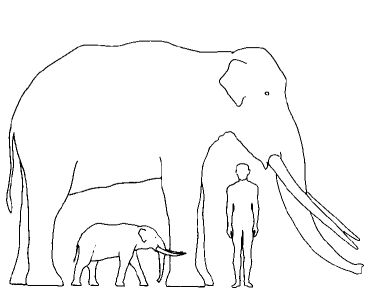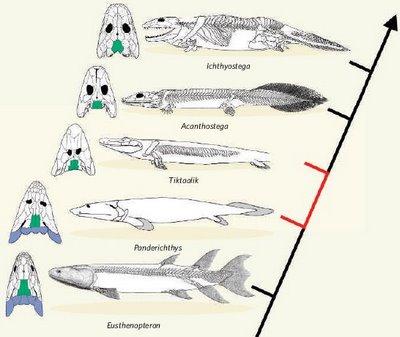
Illustration showing the size of a dwarf elephant
It seems to be common theme that when populations of large mammals are isolated on islands they tend to evolve a dwarfed stature. This is particularly noticeable in elephantids where many have been among the largest species of land animal.
This Island dwarfing has occurred several times in many places and with many different elephantid species, including mammoths on Californian islands, on Wrangel Island in Russia and on the islands of the Mediterranean.
The islands of the Mediterranean have been searched for these the animals and remains have been found on many islands: Sardinia, Sicily, Malta and the Egad Islands, Crete, Cyclades, Dodecanese, Cyprus. They were clearly fairly common in the Mediterranean.
They roamed these islands from the middle Pleistocene (approx ) to about 10,000 years ago. Some people have suggested that they survived into historic times and were depicted on the walls of Egyptian tombs. Sadly, they are all extinct now. One important feature of these elephants is their cuteness. Judging by how many times this dwarfing has happened it shouldn’t be too hard to recreate, a worthy project for someone. I wonder if anyone could get funding for such a project.
There is a theory that the discovery of skulls of pygmy elephants led to the legend of the Cyclops as the skulls have a large hole in the middle (associated with the trunk) that looks a bit like a single large eye socket. The geography origin of the story and occurrence of the pygmies certainly coincide making this theory plausible.
It used to be thought that all of these species were quite closely related and descendants of Elephas antiquus although the polygenetic position derived from their morphology was never particularly clear. There has now been DNA analysis carried out on bones from several different islands and it turns out that these elephantids probably have at least two separate ancestoral species with the eastern and western parts of the Mediterranean being colonized at different times. The ones in the eastern Mediterranean seem to be descended chiefly from Elephas during the Late Pleistocene and those in the eastern from Mammuthus during the Middle Pleistocene.
This research is remarkable because some of the DNA recovered is around 800,000 years old. This represents one of the oldest DNA fragments ever recovered, this opens up the possibility of further analysis of other organisms of this age.
Refs:
Ancient DNA forces reconsideration of evolutionary history of Mediterranean pygmy elephantids.
Biology letters, in press, published online: 21 April, 2006. DOI: 10.1098/rsbl.2006.0467
Nikos Poulakakis, Aris Parmakelis, Petros Lymberakis, et al.
Dwarf elephants (Wikipedia)
Adalgisa Caccone lab
Dwarf elephants: evolutionary patterns (12 papers can be downloaded here)
Cyclops Myth Spurred by "One-Eyed" Fossils?
Did endemic dwarf elephants survive on Mediterranean islands up to protohistorical times? (PDF)












